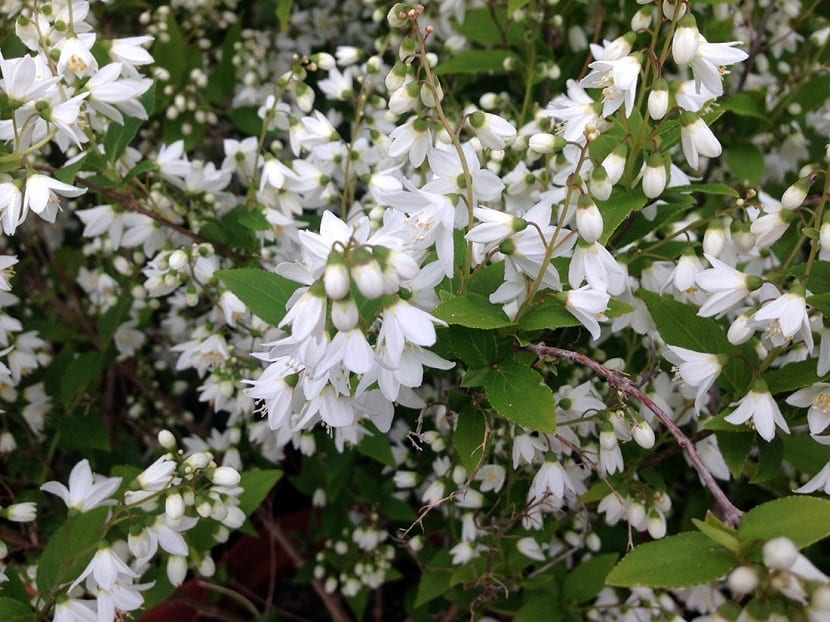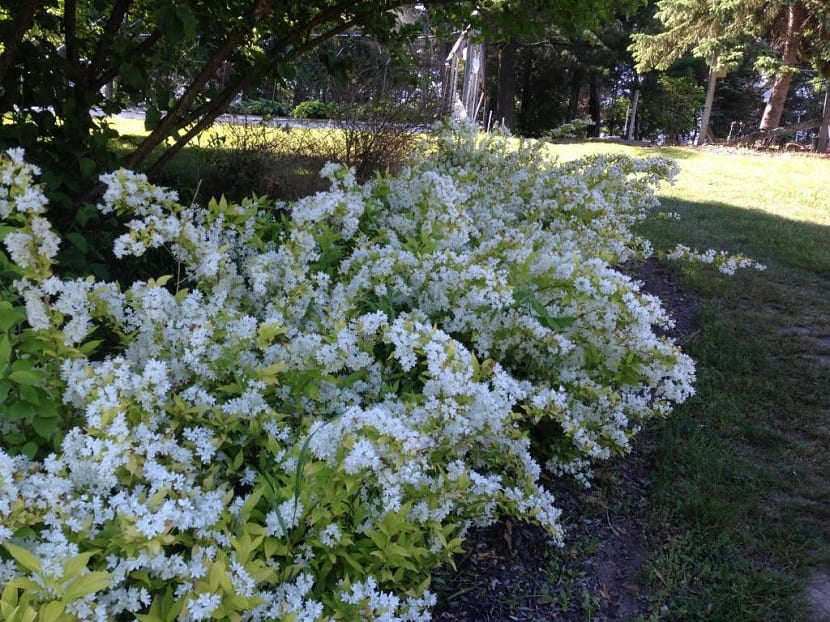
Deutzia o Celinda de espigas is a plant native to the Asian Continent, more specifically Japan and China, as well as Central America.
This is a shrub that in spring or early summer is adorned with beautiful flowers that resemble a star that can be shown in white or pink and that often they offer a quite pleasant aroma, existing a great variety of hybrids that adapt to the diverse conditions.
Characteristics of the Deutzia

This particular ornamental shrub can reach up to two meters in height, erect in character, its branches are woody at the base, while at its apex it presents a semi-woody or herbaceous structure that it is wrapped in a thin and rough crust.
In relation to its deciduous leaves, these are lanceolate, toothed, of an exotic grayish-green color. Flowering occurs in late spring, when covered with attractive star-like flowers, with five sepals and white or pink petals that are abundantly seen in the axil of the plant's leaves. It has fruits in an encapsulated form that contains the seeds.
planting and propagation
Regarding the planting, propagation and care of the Deutzia it will depend on the species in question, because there are a number of peculiarities between the various species. Some rustic ones such as D Scabra and D Grandiflora tolerate low temperatures very well. up to -25º C, while another group such as D Staminea and D Pulchra are less tolerant, so they can withstand temperatures down to -5º C.
Some of them can be deteriorated by frost during spring, such as D Gracilis and D Glandiflora. According to the climatic region in question and if it is in the north, they prefer full sun, while in the central-south zone, half shade. Now in the warm areas it is better to place them in places that are well sheltered from the afternoon sun.
The planting of the Celinda of spikes is frequently done in the autumn, however and in cold areas it is preferable to do it in the spring. In the case of hedgerow formation with D Gracilis, these they should be placed at distances of approximately 60-80 cm.
While this species adapts easily to any type of soil and substrate, it is better to use fertile, moist and well-drained soils, rich in humus and decomposed leaves.
After the flowering of the bush has occurred, old branches must be cut from the base. During the pruning of the plant it should be taken into account that the inflorescences are formed on the sides of the branches that appeared during the previous year and are quite abundant in young crops.
Esto explains the need to remove old branches, to facilitate and stimulate the appearance of new formations from the base of the plant. All areas damaged by frost must be removed. During flowering it is important to add plenty of water, the same should be done in summer.
Regarding the propagation of this shrub we can say that propagates from seed, while for cultivars and hybrids it must be provided with softwood cuttings taken in spring, which are rooted in a mixture of sand according to the species in question.
Uses

This species is cultivated as an ornamental plant and thanks to its characteristics, can be used in gardens and terraces, since its height rarely exceeds two meters; In addition, it can be pruned annually without compromising the development of the plant.
Diseases and parasites
It is a very resistant plant, however it can suffer from certain fungal diseases due to excessive humidity, such as powdery mildew disease. With regard to pests, it is important to be very attentive to aphids and larvae of the butterfly Gracilaria syringella. In general, the leaves attacked by these parasites have dark spots that give the plant an unsightly appearance, so it is necessary to use specific pesticides for each type of pest or to resort to an organic garlic pesticide. For its care, the plant requires that those flowers that are withered be removed.